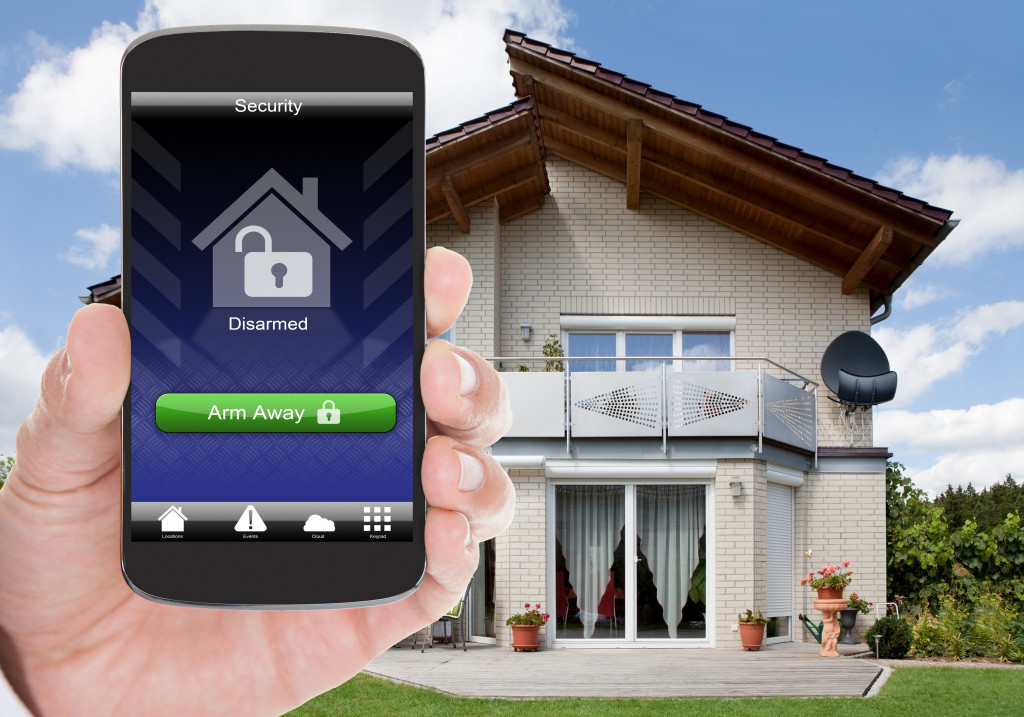- Invest in a reliable home security system with motion sensors and cameras.
- Make your home appear occupied when away by using timers, window decals or stickers.
- Designate an emergency contact, review escape routes and prepare an evacuation kit
- Install safety features such as smoke detectors, fire extinguishers and locks on windows and doors
- Have a plan for emergencies in case of break-ins or fires to ensure the safety of your home and family.
Your home is your haven, which should bring peace and assurance to you and those who share it with you. Unfortunately, the reality is that burglaries and other forms of home invasions do occur, and it’s important to take steps to protect your home and family. This guide will provide five tips to ensure your home is safe and secure.
1. Secure Your Doors and Windows
The first step in securing your home is to ensure your doors and windows are properly secured. This means installing sturdy locks on all doors and windows and ensuring they are in good condition. Additionally, you may want to consider installing a deadbolt on your front door for added security.
Another way to secure your doors is to install a door chain or a peephole. This will allow you to see who is at the door before you open it. You should also ensure that all of your windows have locks and are closed and locked when you are not at home.
2. Install a Home Security System
Installing reliable home security systems is an excellent way to protect your home and family. Many different types of systems are available, including wired and wireless systems, and you can choose the one that best meets your needs. A home security system will allow you to monitor your home remotely, and it can also be set up to alert the police if an intruder is detected.
3. Install Motion Sensor Lights

Motion sensor lights are a great way to deter potential intruders. These lights turn on automatically when they detect movement in their vicinity, which will startle anyone who attempts to enter your home without permission. Additionally, these lights will provide extra lighting for areas around your home that may not be visible from the street.
Installing motion sensor lights is not difficult and can be done in a few steps. First, you must purchase the necessary components for the installation, such as motion sensors, wiring, and light fixtures. Once you have all the materials ready, you’ll need to locate where you would like the lights installed. After you have chosen the location, you can begin to install the motion sensor lights. Start by connecting the wiring from the fixtures to the motion sensors. Then, mount and secure the light fixtures in their designated spots. Finally, test the lights to ensure they are working correctly and then turn them on for use.
4. Make Your Home Look Occupied
One of the best ways to deter burglars is by making your home appear occupied even when you’re not there. This can be done by having timers installed on lights or electronics so that they turn on and off at regular intervals. You may also want to invest in some window decals or stickers that indicate the presence of a home security system.
Ensuring you keep a tidy lawn area and trim the hedges around your home is another way to appear occupied. A well-maintained yard signals to burglars that someone is watching over the property, even when they’re not there. Keeping up with neighborhood gossip can also be beneficial as it can serve as an early warning system if someone snoops around the neighborhood.
5. Have a Plan for Emergencies
Planning for emergencies, such as fires or break-ins, is important. Make sure your family knows what to do in an emergency, and practice it regularly. It’s also important to have contact information for the police and fire departments handy in case you need help quickly.
Here are some tips for emergencies:
Establish an Emergency Contact
Identify a family member or friend who can be the emergency contact for your household in case of an emergency. Ensure everyone knows how to reach them and they have up-to-date information regarding each family member’s location.
Reviewing Escape Routes

Designate two ways out of each room, such as outside doors and windows, in case there are blocked exits during an emergency situation. Discuss the best escape routes with the entire household and practice exiting through them several times a year.
Prepare an Evacuation Kit
Put together a kit with essential items in an emergency, like flashlights, batteries, first aid kits, food, and water. Store it in an easily accessible place known to all family members.
Develop a Communications Plan
Determine the best way for family members to stay connected if you are separated during an emergency situation. Also, decide how long you should wait at your home before leaving if needed and where you should meet outside of the house in case of evacuation.
Install Safety Features
Consider adding safety features like smoke detectors, fire extinguishers, deadbolts on doors and window locks to your home. They could be essential tools during an emergency and help protect your family from potential harm.
In Closing
By following these five tips, you can ensure your home will be safe and secure for yourself and your loved ones. Do not forget to make sure all locks are working properly, install a home security system, and have a plan for emergencies. With these measures in place, you can rest assured that your home will be a secure sanctuary for years.



















